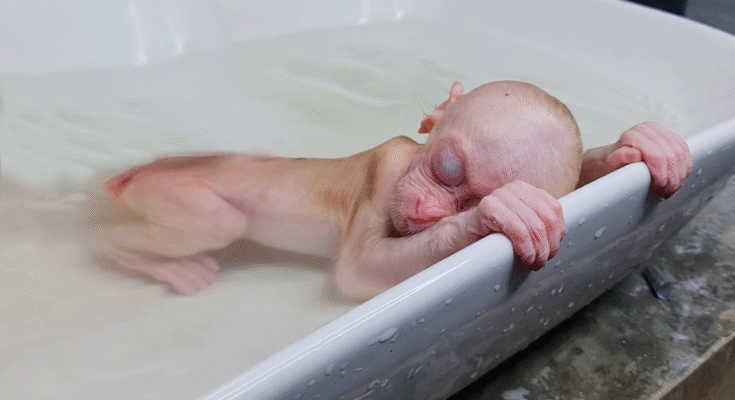Every morning, baby monkey LuLu wakes up quietly under the warm sun, her tiny eyes filled with hope despite her struggles. Living in a small shelter, LuLu’s routine starts with gentle grooming and a sip of milk from a bottle. Her caregiver lovingly wraps her in a soft towel, preparing her for a fresh start. Though poor and abandoned, LuLu’s innocence melts hearts. Her playful moments with leaves and twigs bring joy to viewers worldwide. These touching scenes of LuLu’s survival and daily care routines are both heartwarming and engaging—perfect for audiences seeking emotional, viral, and monetizable content.
1. The First Steps: From Clinging to Crawling
At birth, a newborn monkey lacks the strength to walk independently. Instead, it clings tightly to its mother’s fur, feeling comforted by her heartbeat and warmth. In the first few days, the baby begins experimenting with small movements, attempting to shift its position while still holding on. Soft cooing sounds from the mother encourage the baby to stay close, while her movements provide a natural rhythm, teaching the infant how to balance and adjust. This stage is crucial for muscle development, laying the foundation for future mobility.
2. Recognizing Sounds and Environmental Cues
As the baby monkey grows, it becomes more aware of the sounds surrounding it. The gentle rustling of leaves, the distant calls of its troop, and its mother’s reassuring vocalizations help shape its sense of space and direction. These sounds act as an auditory guide, signaling when to move, pause, or seek safety. By listening and responding to these cues, the newborn learns to associate movement with security, gradually building the confidence to step away from its mother for short moments.
3. Strengthening Muscles: Small Steps with Big Progress
By the second or third week, the baby monkey begins testing its strength by attempting short, shaky steps while still supported by its mother. The soft padding of the forest floor absorbs its tiny missteps, allowing it to explore safely. At this stage, it starts using its hands and feet more effectively, gripping tree roots or nearby objects for balance. The rhythmic sounds of footsteps from other monkeys in the troop further encourage movement, signaling that walking is a natural and essential part of survival.
